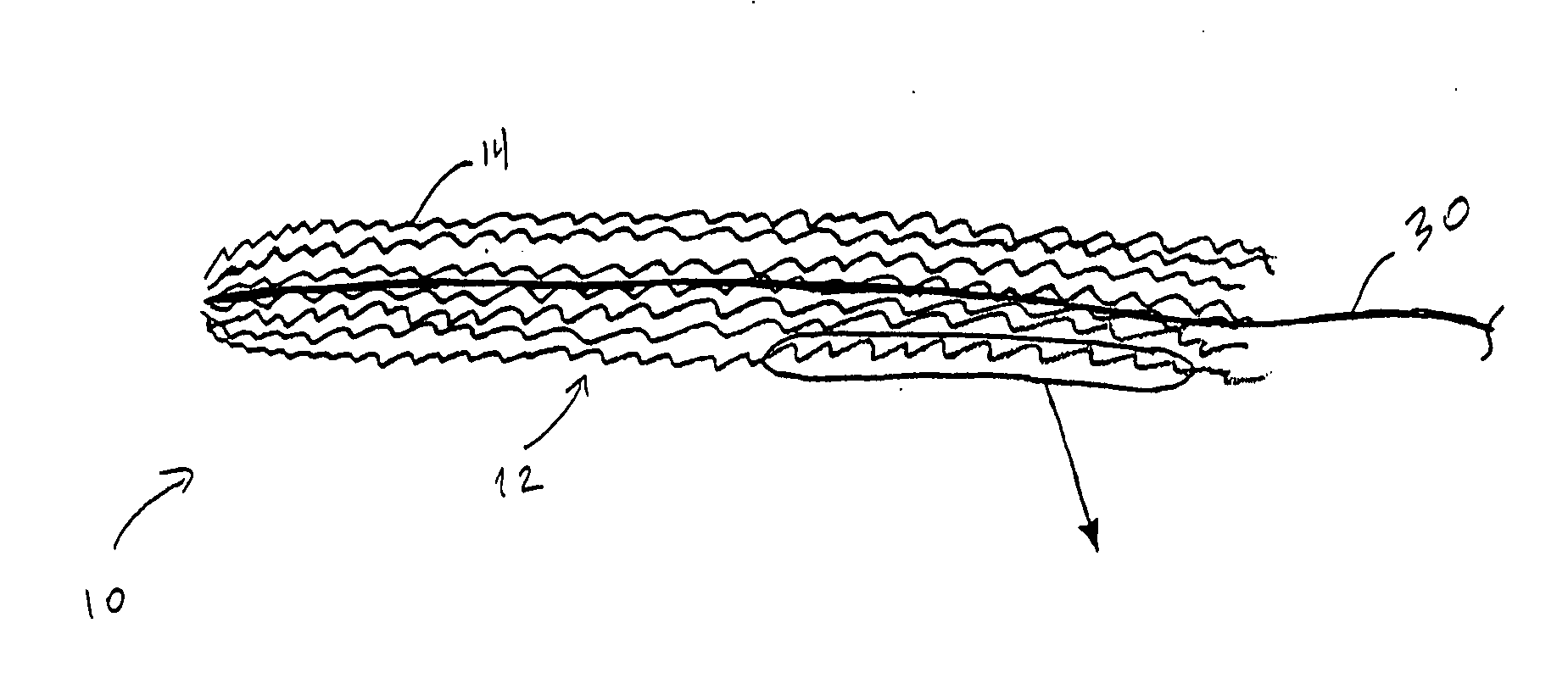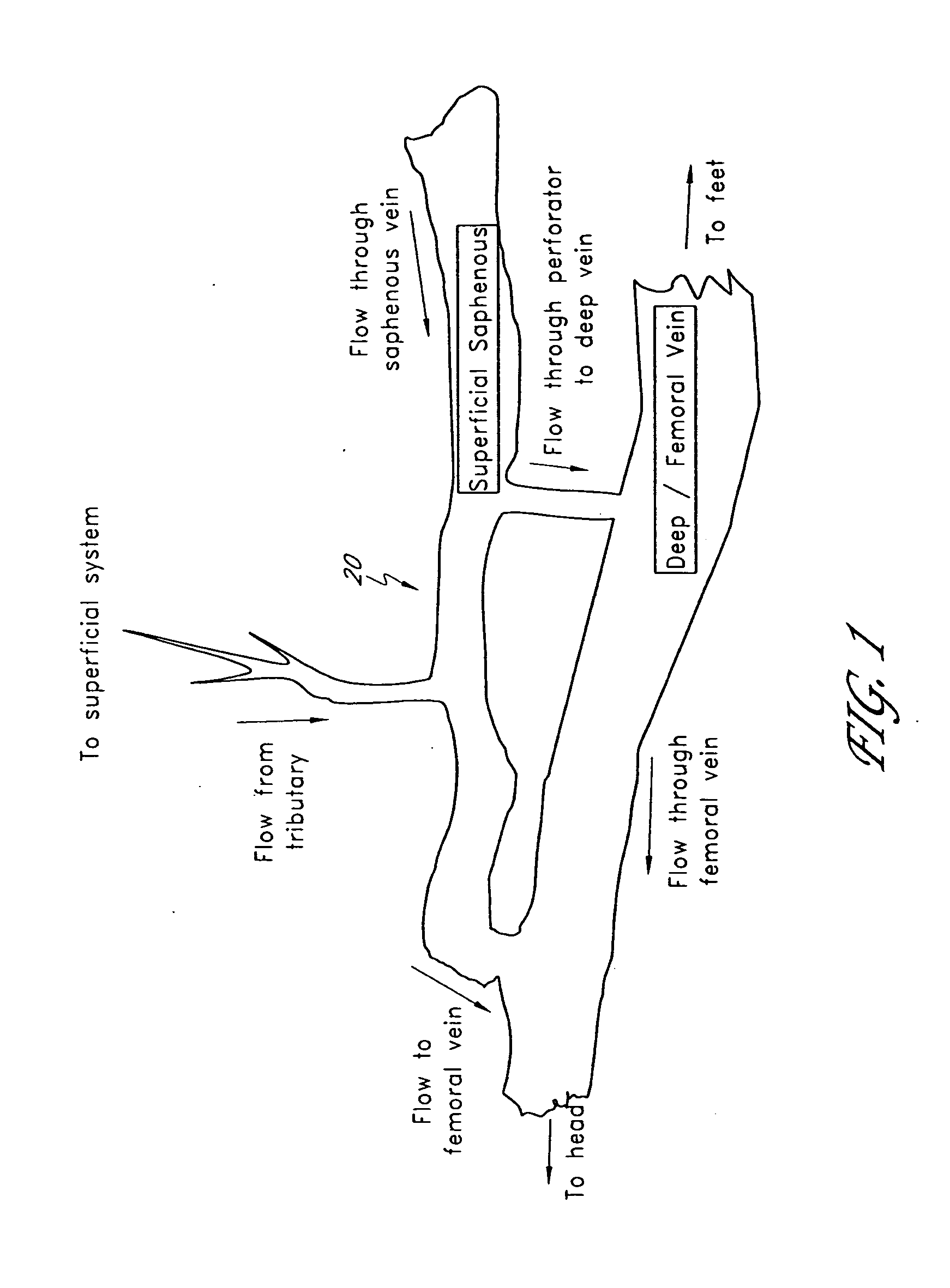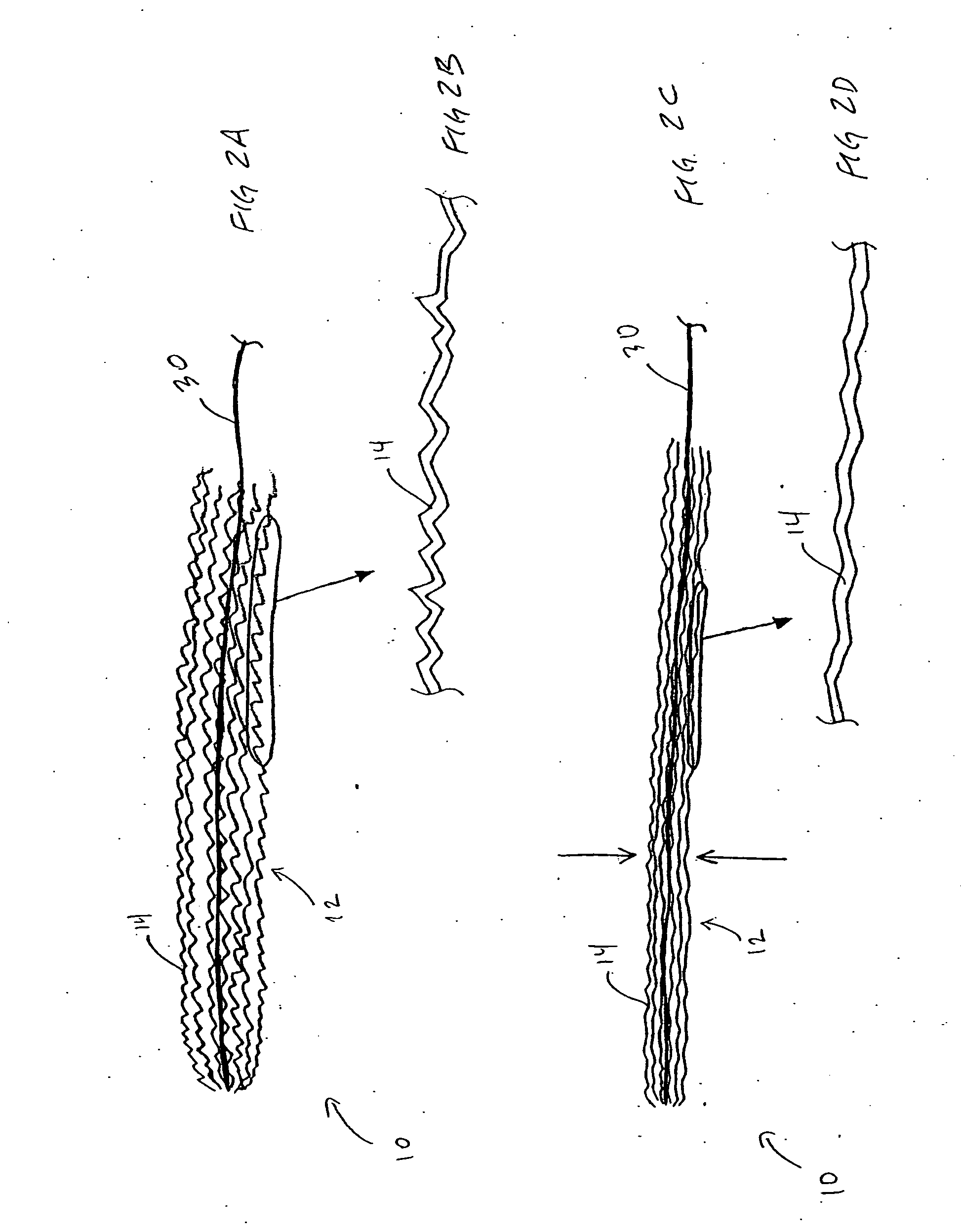Occlusive implant and methods for hollow anatomical structure
a hollow anatomical structure, occlusive technology, applied in the field of occlusive implants, can solve the problems of inability to close the valve, additional, distal valvular failure, pain, swelling, etc., and achieve the effect of promoting occlusive ingrowth and reducing the patency of the hollow anatomical structur
- Summary
- Abstract
- Description
- Claims
- Application Information
AI Technical Summary
Benefits of technology
Problems solved by technology
Method used
Image
Examples
Embodiment Construction
[0104] The following description and examples illustrate preferred embodiments of the present invention in detail. Those of skill in the art will recognize that there are numerous variations and modifications of this invention that are encompassed by its scope. Accordingly, the description of a preferred embodiment should not be deemed to limit the scope of the present invention.
[0105] Methods, systems, and apparatuses for occluding a hollow anatomical structure (e.g. FIG. 1) in a patient or subject using an occluding device or occluding material are provided. The terms “subject” and “patient” as used herein, refer to animals, such as mammals. For example, mammals contemplated by one skilled in the art include humans, primates, dogs, cats, sheep, cattle, goats, pigs, horses, mice, rats, rabbits, guinea pigs, and the like. The terms “subject” and “patient” are used interchangeably.
[0106] The terms “occluding device” and “occluding material” as used herein, are broad terms and are u...
PUM
 Login to View More
Login to View More Abstract
Description
Claims
Application Information
 Login to View More
Login to View More - R&D
- Intellectual Property
- Life Sciences
- Materials
- Tech Scout
- Unparalleled Data Quality
- Higher Quality Content
- 60% Fewer Hallucinations
Browse by: Latest US Patents, China's latest patents, Technical Efficacy Thesaurus, Application Domain, Technology Topic, Popular Technical Reports.
© 2025 PatSnap. All rights reserved.Legal|Privacy policy|Modern Slavery Act Transparency Statement|Sitemap|About US| Contact US: help@patsnap.com



